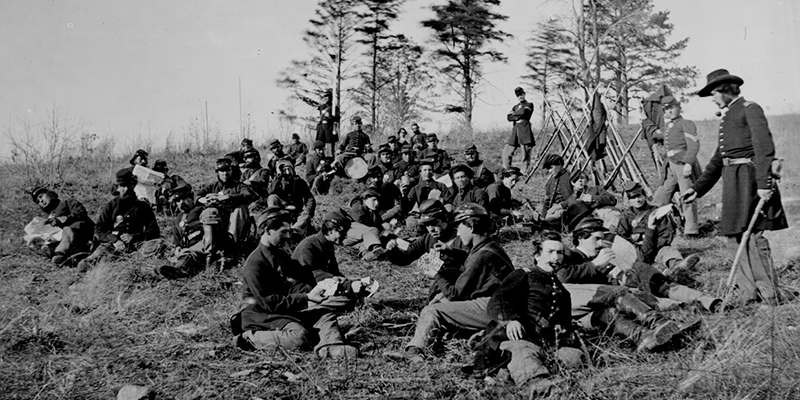Civil War Roll of Honor is rich source of material

Reprinted Column by Lloyd DeWitt Bockstruck: 16 April 1994 – Civil War Roll of Honor is rich source of material

War records are a rich source of genealogical information. An important military source is the Roll of Honor: Names of Soldiers who Died in Defense of the American Union, Interred in the National Cemeteries. Twenty-seven volumes were published by 1871. Although great efforts were undertaken to identify all the soldiers who died during the Civil War, it would be many decades before the information would be properly indexed and available to the public.
Here’s the story behind the roll’s origin: The year was 1865. The Civil War had ended. Thousands of Americans had died on the field of battle or of disease. Friends, relatives, and surviving comrades were anxious to learn the fate of soldiers and sailors. To meet these needs and to memorialize the more than 300,000 people who gave their lives in their country’s service, the Secretary of War sought to compile a necrology – a memorial of the dead. It was the first time a task of such scope had been undertaken.
Surprisingly, the Quartermaster’s Department persevered in the grim job of exhuming from the battlefields, prison pens, and POW camps and reinterring the corpses of more than 200,000 soldiers.
In the end, many of the soldiers remained in the battlefields where they fell. These massive graves were transformed into national cemeteries.
However, when the Roll of Honor was published, it did not contain an index of the deceased. The volumes did not appear in a satisfactory arrangement. The cemeteries were not categorized by state but by the order in which they were surveyed.
The first volume covered the national cemeteries in Washington, D.C. and Arlington, Virginia. The third was devoted to the 12,000 who lost their lives in the prison pens in Andersonville, Georgia.
Most of the volumes issues after 1868 included the original sites of interment. The government issued a four-volume Disposition showing the final resting places of the soldiers whose graves were relocated. The Disposition volumes were the closest thing to an index.
Many communities in the nation had no libraries to collect these 27 volumes, and few people realized the importance of saving the contemporary record. None of the original volumes are among the holdings of the Dallas Public Library.
Fortunately, the Library of Congress has a complete set. From that institution, Genealogical Publishing Company has been able to obtain permission to reprint the Roll of Honor and the Disposition. They have consolidated the first six volumes in their reprint series.
The set is a genealogical treasure trove providing the soldier’s name, rank, regiment, company and date of death. The first of a set expected to total nine volumes is now available in hardcover for $38.50 plus $3 handling from Genealogical Publishing Company, Inc.
While we are on the subject of Early American history, here’s a teaser: Of the 50 states in the Union, do you know which one has the longest name? If you said Mississippi, you were wrong. The answer is actually the smallest state in the Union. It’s not Delaware, which is twice as big. It was the first to declare independence from Great Britain. Would it help to know that this state has roughly the same shape of the Isle of Rhodes in the Mediterranean? All right, the answer is the “state of Rhode Island and Providence Plantations”. Much of our heritage in the areas of personal and religious liberty stem from the people such as Roger Williams who settled this colony.
Americans with Rhode Island ancestry can be justifiably proud of their heritage. A major genealogical source for Rhode Island is Howard M. Chapin’s Rhode Island in the Colonial Wars. It was originally issued in two volumes after World War I. They set forth the soldiers and sailors from Rhode Island in King George’s War (1740-1748) and the French and Indian War (1755-1763).
Each work is in alphabetical order so the reader needs to be alert to examine both sections in this edition when searching for a particular name. Rhode Islanders fought at Fort Duquesne, Crown Point, Niagara, Lake George, Louisberg, Fort Frontenac, Cuba and Ticonderoga. They were also at Fort William Henry, the scene of the infamous massacre in The Last of the Mohicans. Mr. Chapin’s work is available from Genealogical Publishing for $20 plus $3 handling.
As you plan your summer vacations in North America, you may well want to use one of these works to share with your family members the roles your forebears had in our nation’s history.
Source:
Copyright © 1998 by Dallas Genealogical Society, from “Family Tree” Weekly Newspaper Columns from The Dallas Morning News 1991-1996 by Lloyd DeWitt Bockstruck

